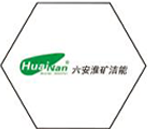
Dec . 06, 2024 14:07
Back to list
صمام التنفيس
Understanding Pressure Relief Valves A Critical Component in Fluid Systems
Pressure relief valves (PRVs) are essential devices widely used in various industries to ensure safety and efficiency in fluid systems. These valves play a crucial role in preventing overpressure situations that could lead to catastrophic failures, making them a focal point in discussions about engineering safety and process management.
What is a Pressure Relief Valve?
A pressure relief valve is a safety device designed to automatically release pressure from a system when it exceeds a predetermined limit. It operates by opening at a designated pressure, thus allowing excess fluid to escape and preventing potential damage to the piping, equipment, and the overall system. The primary function of a PRV is to maintain system integrity by preventing overpressure, which can result from a variety of factors, including thermal expansion, equipment malfunction, or unexpected changes in fluid flow.
Types of Pressure Relief Valves
There are several types of pressure relief valves, each serving specific applications
1. Spring-Loaded Relief Valves These are the most common types, where a spring opposes the fluid pressure. Once the pressure exceeds the set point, the valve opens until the pressure drops back to a safe level.
.
3. Bursting Discs While not a valve in the traditional sense, bursting discs serve a similar function by rupturing at a specified pressure, allowing for complete relief of pressure when needed.
صمام التنفيس

4. Safety Relief Valves Specifically designed for gas applications, these valves ensure safety by venting to the atmosphere.
Applications of Pressure Relief Valves
PRVs are integral to many industries, including oil and gas, chemical manufacturing, power generation, and water treatment. In oil and gas operations, for example, PRVs protect equipment from pressure surges that can occur during extraction and transportation processes. In chemical plants, these valves help prevent explosive reactions by maintaining pressure within safe limits. The importance of PRVs in ensuring safety cannot be overstated; they are indispensable in protecting both human life and the environment.
Installation and Maintenance Considerations
Proper installation and maintenance of pressure relief valves are critical to their functionality. It is important to ensure that the valves are correctly sized for the application and that they are installed in locations where they can operate effectively without obstruction. Regular maintenance checks should be scheduled to confirm the valves are not clogged, leaking, or otherwise malfunctioning. Manufacturers typically provide guidelines on maintenance frequency, which should be adhered to strictly to ensure ongoing safety.
Regulatory Standards and Compliance
Many industries are governed by stringent regulations that dictate the use of pressure relief valves. Compliance with these standards is essential not only for safety but also for legal operation. Organizations like the American Society of Mechanical Engineers (ASME) and the National Fire Protection Association (NFPA) have established codes that provide guidelines for the design, installation, and maintenance of PRVs. Understanding and adhering to these regulations is essential for any organization that deals with pressurized systems.
Conclusion
In summary, pressure relief valves are a vital component in the safety and efficiency of fluid systems across various industries. Their ability to regulate pressure prevents equipment failure and protects against potentially dangerous situations. Understanding the different types of PRVs, their applications, and the importance of proper maintenance is crucial for engineers, operators, and safety personnel alike. As technology advances, the design and functionality of pressure relief valves continue to evolve, promising even higher standards of safety and efficiency in industrial operations. By investing in quality PRVs and adhering to regulatory standards, industries can prioritize safety while optimizing their operational processes.
Next:
Latest news
-
Safety Valve Spring-Loaded Design Overpressure ProtectionNewsJul.25,2025
-
Precision Voltage Regulator AC5 Accuracy Grade PerformanceNewsJul.25,2025
-
Natural Gas Pressure Regulating Skid Industrial Pipeline ApplicationsNewsJul.25,2025
-
Natural Gas Filter Stainless Steel Mesh Element DesignNewsJul.25,2025
-
Gas Pressure Regulator Valve Direct-Acting Spring-Loaded DesignNewsJul.25,2025
-
Decompression Equipment Multi-Stage Heat Exchange System DesignNewsJul.25,2025

